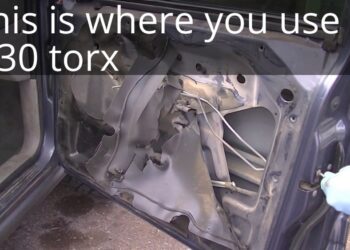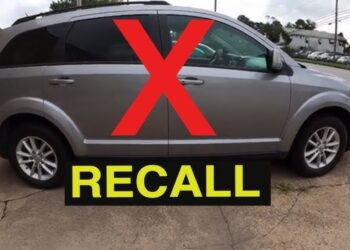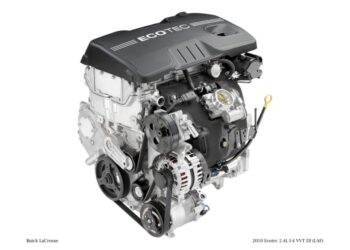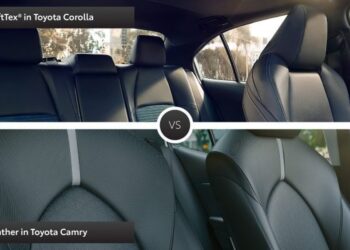Is your Honda Pilot’s AC not working? You’re not alone.
Many Pilot owners face this issue, especially during hot weather. Dealing with a faulty AC in your Honda Pilot can be frustrating. The AC system is crucial for comfort, especially on long drives or during summer months. Understanding why your AC might stop working is key to finding a solution.
In this blog post, we’ll explore common reasons behind AC failures and provide practical solutions. Whether it’s a simple fix or something more complex, you’ll find useful tips to get your Honda Pilot’s AC up and running again. Let’s dive in and make your drives cool and comfortable once more.
Common Ac Problems
Experiencing issues with your Honda Pilot’s AC system can be frustrating. Understanding common problems can help you diagnose and fix them quickly. Here are a few common AC problems you might encounter.
No Cool Air
If your Honda Pilot’s AC isn’t blowing cold air, it can ruin your drive. This issue often stems from low refrigerant levels. Sometimes, a refrigerant leak causes this. Check for any visible leaks or oily spots under the hood. Another reason could be a faulty compressor. The compressor is vital for the AC system. When it fails, the air won’t cool. Electrical issues can also cause this problem. Ensure all connections are secure and fuses are intact.
Weak Airflow
Weak airflow from the AC vents can make your ride uncomfortable. A common cause is a clogged cabin air filter. This filter traps dust and debris but can get dirty over time. Replacing it can improve airflow. Another cause could be a failing blower motor. The blower motor pushes air through the vents. If it’s weak or faulty, airflow decreases. Also, check the vents for any obstructions. Sometimes, items can block the vents and restrict airflow.
Credit: www.piloteers.org
Initial Checks
Is your Honda Pilot’s AC not working? You can often fix it with some initial checks. Start by ensuring everything is set up correctly. Then, inspect some key components. This can save time and money before seeking professional help.
Check Ac Settings
First, check your AC settings. Ensure the AC button is turned on. Set the temperature to a cold setting. Verify that the fan speed is not on the lowest setting. These simple checks can sometimes solve the problem.
Inspect Fuses
Next, inspect the fuses. A blown fuse can cause AC issues. Locate the fuse box in your Honda Pilot. Use the manual to find the AC fuse. Check if it is blown. Replace it if needed. This quick check can restore your AC.
Refrigerant Issues
Experiencing issues with your Honda Pilot’s AC can be frustrating. One of the common causes is refrigerant issues. Understanding these can help you diagnose and fix the problem quickly. Let’s dive into the details.
Low Refrigerant
Low refrigerant levels can cause your Honda Pilot’s AC to blow warm air. The system relies on the correct amount of refrigerant to function properly. When levels drop, cooling efficiency decreases. This could be due to several reasons.
One possible cause is natural depletion over time. Refrigerant can escape from the system through tiny leaks. Even a small loss can impact performance. Regular checks can help maintain the right levels.
Refrigerant Leaks
Refrigerant leaks are a common issue in air conditioning systems. Leaks can occur in various parts of the system. These include the compressor, condenser, or hoses. Identifying a leak can be challenging without proper tools.
A telltale sign of a refrigerant leak is an oily residue. This may be found on or around AC components. In some cases, you might notice a hissing sound. This indicates a significant leak. If you suspect a leak, seek professional help.
Repairing a leak involves finding and sealing the source. Then, the system needs to be recharged with the correct amount of refrigerant. This ensures your AC runs efficiently and keeps you cool.
Compressor Concerns
Experiencing issues with the air conditioning in your Honda Pilot can be frustrating. One common problem relates to the AC compressor. The compressor is vital for the cooling process. It circulates the refrigerant through the system. If it fails, the air conditioning stops working. Below, we dive into the common concerns with the compressor.
Compressor Failure
Compressor failure is a frequent issue. It can happen due to wear and tear. The compressor has many moving parts. These parts can wear out over time. When this happens, the compressor stops functioning. As a result, the AC blows warm air. Regular maintenance can help prevent this. Check the compressor during routine services.
Compressor Noise
Another sign of trouble is unusual noise. The compressor should operate quietly. If you hear strange sounds, there might be a problem. Grinding or squealing noises are common indicators. These noises suggest internal damage. Address these noises promptly. Ignoring them can lead to complete failure. A noisy compressor often needs replacement. Early detection can save you from larger repairs.
Electrical Problems
Electrical issues can cause your Honda Pilot’s AC to stop working. These problems can be tricky to diagnose. They include blown fuses and faulty wiring. Understanding these can help you identify and fix the problem.
Blown Fuse
A blown fuse is a common cause of electrical problems in cars. The fuse protects the AC system from power surges. If the fuse blows, the AC stops working. Check the fuse box in your Honda Pilot. Replace any blown fuses to restore the AC.
Faulty Wiring
Faulty wiring can disrupt the AC system. Worn or damaged wires can cause power loss. Inspect the wiring for any visible damage. If you find any, have them repaired or replaced. This can help get your AC back to working condition.
Credit: www.piloteers.org
Climate Control System
The climate control system in your Honda Pilot ensures a comfortable cabin. It regulates temperature and humidity. This system relies on several components. If it fails, the cabin can become uncomfortable. Let’s explore possible issues.
Control Panel Malfunctions
The control panel is the brain of the system. It allows you to set the desired temperature. If the panel malfunctions, the system may not respond. Buttons might stick or not work at all. This can lead to incorrect temperature settings. Regular checks can prevent these issues.
Sensor Issues
Sensors play a crucial role in climate control. They monitor the cabin temperature. If a sensor fails, it can send incorrect data. This can cause the system to overheat or undercool. Sensor issues often require professional diagnosis. Replacing faulty sensors can solve many problems.
Diy Fixes
If your Honda Pilot AC is not working, you might not need a mechanic right away. There are some DIY fixes you can try at home. Let’s dive into two simple methods: recharging the refrigerant and replacing fuses.
Recharging Refrigerant
A common issue with car AC systems is low refrigerant levels. You can recharge it yourself with a few tools. Here’s how:
- Purchase a refrigerant recharge kit from an auto store.
- Locate the low-pressure port in your Honda Pilot. It usually has a cap labeled “L”.
- Attach the recharge hose to the port. Ensure it clicks into place.
- Start your car and turn the AC to the highest setting.
- Press the trigger on the recharge kit. Add refrigerant slowly and check the pressure gauge.
- Once the gauge shows the correct pressure, stop recharging.
- Remove the hose and replace the cap.
This process should help cool your car again. Remember, do not overcharge the system.
Replacing Fuses
Sometimes, the issue lies with a blown fuse. Replacing it is simple. Follow these steps:
- Locate the fuse box. It is usually under the dashboard or in the engine compartment.
- Check the fuse diagram. Identify the fuse for the AC system.
- Use a fuse puller or pliers to remove the blown fuse.
- Inspect the fuse. If the metal wire inside is broken, it needs replacing.
- Insert a new fuse with the same amperage rating.
After replacing the fuse, turn on your car and test the AC. If it works, you’ve fixed the problem.
These DIY fixes can save time and money. If the problem persists, consult a professional. Your Honda Pilot deserves the best care.
When To Seek Professional Help
Sometimes, fixing your Honda Pilot’s AC system requires a professional’s touch. Not every problem can be solved with DIY methods. Certain issues are complex and need expert intervention. Here’s when you should seek professional help.
Complex Repairs
Some AC issues are not simple fixes. For instance, if your AC compressor fails, it’s a complex repair. The compressor is the heart of the AC system. Replacing it involves dealing with refrigerant, which requires special tools and knowledge.
Another example is electrical problems. If your AC isn’t working due to an electrical issue, it can be dangerous to fix it yourself. Professionals have the right tools and experience to handle such repairs safely.
Persistent Problems
Is your AC problem recurring? If you fix the issue, but it keeps coming back, it’s time to call a professional. Persistent problems often indicate underlying issues. For example, constant refrigerant leaks suggest a deeper problem that needs a trained eye.
Also, if your AC cools inconsistently, it might be a sign of a bigger problem. Professionals can diagnose and fix these persistent issues effectively.

Credit: www.youtube.com
Frequently Asked Questions
Why Is My Honda Pilot Ac Not Blowing Cold Air?
The AC system might be low on refrigerant. Check for leaks and refill if needed.
How Do I Reset The Honda Pilot Ac System?
Turn off the car, wait a few minutes, then restart. This may reset the AC system.
What Are Common Ac Issues In Honda Pilot?
Common issues include refrigerant leaks, faulty compressors, and clogged filters. Regular maintenance helps prevent these problems.
Can A Dirty Air Filter Affect My Ac?
Yes, a dirty air filter can reduce airflow, making the AC less effective. Replace it regularly.
How Can I Tell If My Ac Compressor Is Bad?
Listen for unusual noises or notice if the air is not cooling. These signs indicate a bad compressor.
Conclusion
Fixing your Honda Pilot’s AC can be simple with the right steps. Start by checking the basics like fuses and refrigerant levels. If problems persist, consult a professional mechanic. Regular maintenance helps prevent future issues. Keep your car’s AC in top shape for a comfortable ride.
Stay cool and enjoy your journey.

















